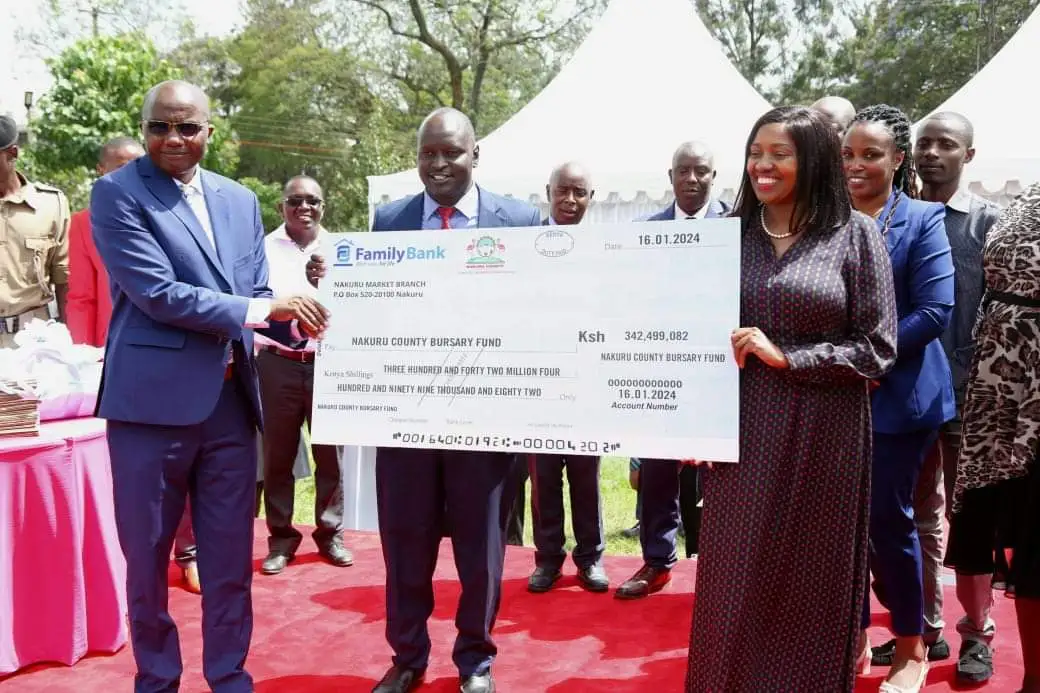Nakuru County Allocates Sh440 Million Bursary to Support 46,345 Needy Students

Thousands of families in Nakuru County have received a major relief after Governor Susan Kihika unveiled a Sh440 million bursary fund, aimed at supporting 46,345 students from underprivileged backgrounds across the county.
Speaking about the initiative, Governor Kihika emphasized that this is the first tranche of the 2025 bursary programme, which is dedicated to ensuring that needy students have access to quality education. She assured parents that all deserving cases would be considered, prioritizing those who missed out on the bursary last year.
In a statement delivered on her behalf by Deputy Governor David Kones, Kihika highlighted that the allocation process is need-based, with low-income settlement areas expected to receive the largest share.
“One of the pillars of my administration is to ensure that no deserving child is denied the right to access education,” she stated.
Bursary Disbursement and Prioritization
So far, the Nakuru County government has reached beneficiaries in Naivasha and Nakuru Town West Sub-Counties, with additional disbursements made to Gilgil Day Secondary School in Gilgil Sub-County.
The bursary awards range between Sh5,000 and Sh10,000, depending on the financial needs of each student. Governor Kihika stressed the importance of transparency in the allocation process to ensure fair distribution and prevent misuse of funds.
The initiative aligns with the national government’s 100% transition policy, aiming to ease the financial burden on parents and ensure that no child drops out due to lack of school fees.
Focus on Technical and Vocational Education
Beyond bursaries, the Governor reiterated her administration’s commitment to enhancing Technical and Vocational Education Training (TVET) to accommodate the growing number of students seeking higher education.
She pledged to:
- Provide Sh30,000 capitation per trainee in vocational training centers.
- Improve infrastructure, equipment, and staffing in vocational institutions.
- Form partnerships with private companies to offer students hands-on skills in an industry setting during their training.
Governor Kihika emphasized that these efforts will help bridge the skills gap, ensuring that graduates from Youth Polytechnics and TVET institutes receive practical experience by spending at least 50% of their study time in industries.
“We are keen to merge skills with certificates, so that those with technical abilities receive recognition, and those with academic qualifications gain practical experience to drive our economy forward,” Kihika added.
Encouraging Economic Self-Sufficiency
The Governor urged parents and residents across Nakuru County’s 11 Sub-Counties to take advantage of economic opportunities and promote self-sustainability, ensuring they can support their children’s educational needs in the long term.
Future Plans for Education and Workforce Development
Kihika reaffirmed her administration’s vision of transforming Nakuru into an economic powerhouse by investing in education. She highlighted plans to:
- Expand bursary coverage in future allocations.
- Continue supporting vocational institutions.
- Enhance dual TVET programmes, which combine classroom instruction with real-world experience.
Governor Kihika also encouraged students to consider pursuing technical education, noting the increasing demand for skilled professionals in Kenya’s job market.
With the disbursement of the bursary funds and continued investments in education infrastructure, Nakuru County is making significant strides toward empowering the youth and fostering long-term economic growth.
